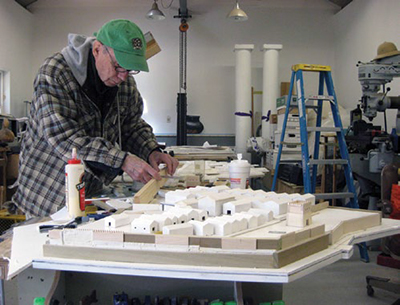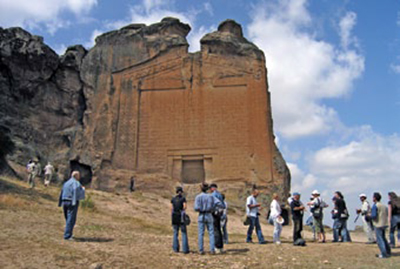In 2016, a spectacular new exhibition of Anatolian archaeology will open at the Penn Museum. The show’s theme is the archaeology, history, and culture of Phrygia—an ancient region located in what is today central Turkey, and which, in the 9th and 8th centuries BCE, was a powerful Iron Age kingdom centered on the city of Gordion.
Associated with the fabled King Midas, and the place where Alexander the Great was said to have cut the legendary “Gordian Knot,” Gordion is the Penn Museum’s longest running excavation, with work conducted at the site from 1950 to the present. For the first time since 1958 visitors to the Penn Museum will be able to contemplate first hand a marvelous selection of the many thousands of artifacts excavated at the site, as well as other remarkable finds from the region. This exhibition has been made possible through collaboration with the Museum of Anatolian Civilizations at Ankara and other international institutions, which are loaning artifacts to Penn for one year.

To accompany the exhibition, the Gordion Project, directed by Brian Rose, is creating a detailed physical model of the Gordion citadel in the Early Phrygian period, a three-dimensional reconstruction to help visitors visualize how the core of the settlement might have looked and functioned in the late 9th century BCE. This interpretive model is the gift of Christopher Ray, an experienced model maker, exhibit designer, and artist, who has already made scholarly models for the Penn Museum and other institutions. The model’s details are based on the wealth of evidence from the Penn excavations, and from comparisons to other sites from the same time period in the region. Research and design related to the model is coordinated by the Gordion Archivist, Gareth Darbyshire, in coordination with other members of the Gordion team.
Although digital reconstructions are of great value, and will also be used in the exhibition, the physical model has its own distinctive aesthetic and informative power, and at a 1:300 scale (where 1 cm on the model equals 3 m at Gordion) it can carry a surprising amount of detail. Reconstructions such as this, based on incompletely preserved and excavated remains, inevitably demand a considerable degree of informed speculation, but this tension between what is known and what is uncertain is a major part of the imaginative excitement generated by archaeology. Creating the model is already proving to be a challenging and exciting process, constantly raising new questions of interpretation, and we can all look forward to reflecting on these and many other aspects of Gordion and Phrygia in 2016!


